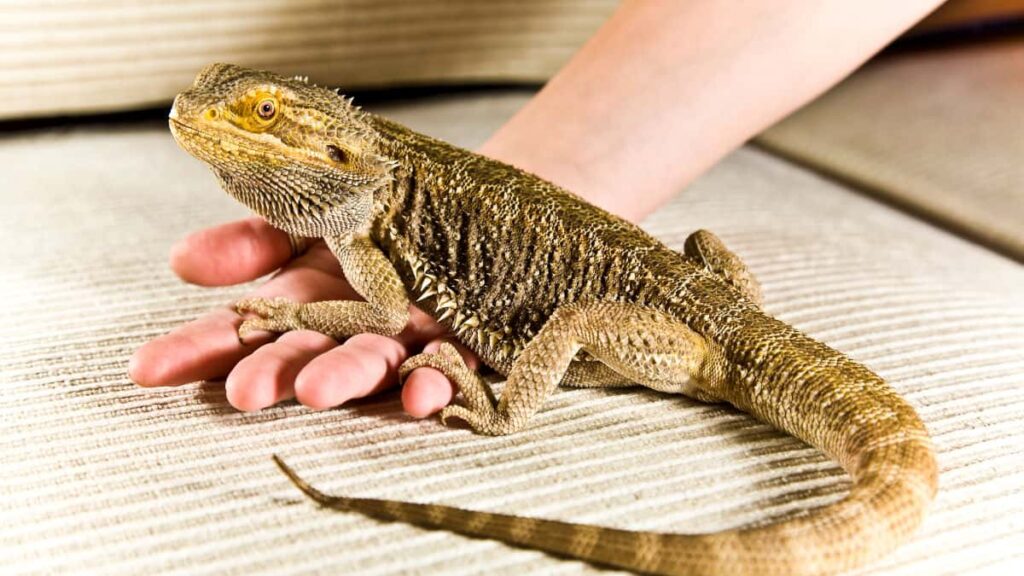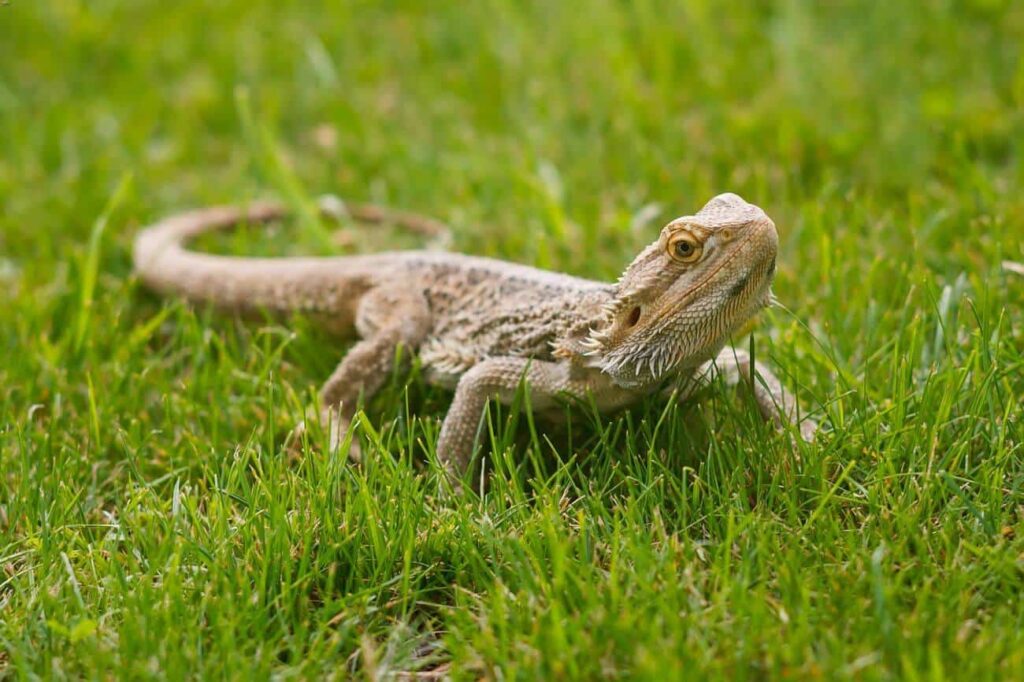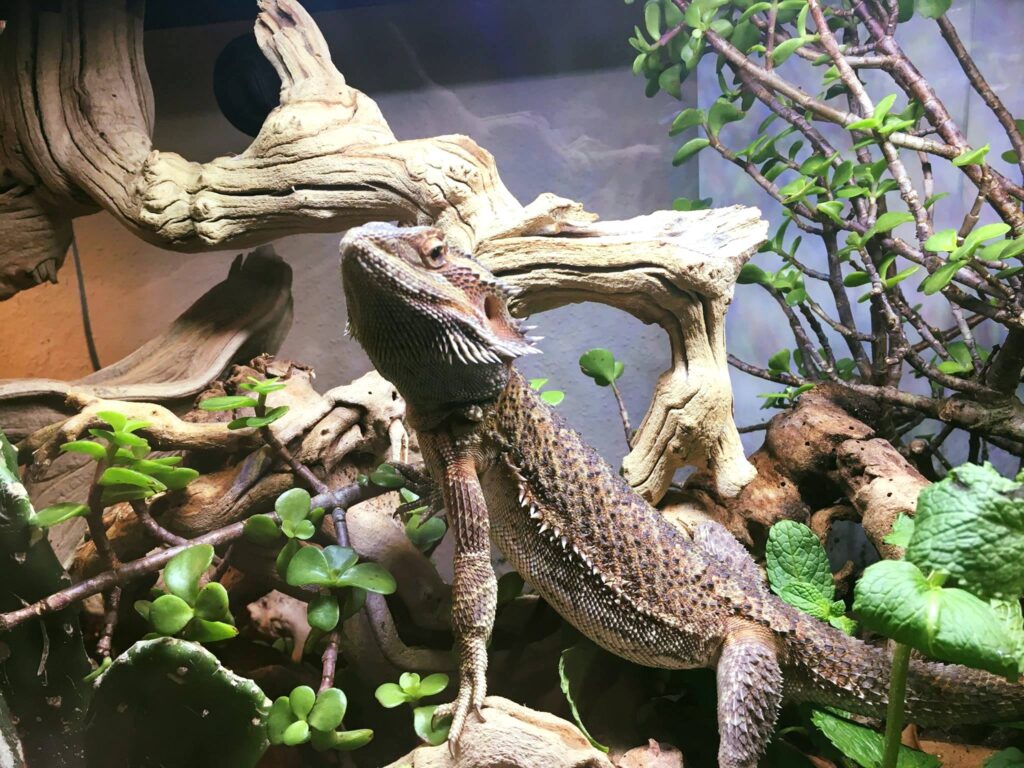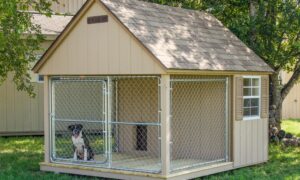There’s just a majestic air about bearded dragons, perching on their tree branch throne, looking mildly conceited. It might be the tongue-lolling wide-mouth smile that got you to love beardies, or perhaps it was their serious yet curious stare that sucked you in. Whatever the reason behind your fascination with this lovely creature, if it has got you interested in getting one as a pet, you should know that taking care of them is no cakewalk. Especially, if you are totally new to the pet reptile world.
If you have decided about getting one, questions might be swarming in your mind right now; how big they will become, what do they eat, or how do they live? Well, this article might answer all your questions and so much more. Let’s get started to be a bearded dragon expert; albeit a moderate one!
General Information

Source: petguided.com
Bearded dragons are Australian-originated lizards. They got their unique name from the spikes that line their chins; like a beard. The flap of skin under their chin flares up depending on their mood; mostly to scare off enemies. Despite the common notion, they are not nocturnal.
According to topflightdubia.com a mature bearded dragon can be up to 45 cm long and can weigh about 230- 520 grams. They are omnivorous; from crickets, worms to fat-rich Dubia Roaches to leafy greens or fruits, they like all kinds of food. They live for about 10 to 15 years, so having one means you are in for a long time. Here’s the basic pet care you need to know for your bearded dragon.
Enclosure
Pet reptiles need a glass enclosure – a vivarium as home, and bearded dragons are not any different. The enclosure should be big enough so that they can move comfortably around. Many first-time owners go for a smaller one as they opt for younger beardies. However, as they grow older, the enclosure might become small for them and not suit them any longer.
So it’s better to get an appropriately sized enclosure from the very beginning – be it a young or a grown-up beardie you are getting. A 75-120 gallon enclosure might be enough for a baby bearded dragon to grow up. But the bigger their tank is, the better they will thrive. Consider a four feet long, two feet wide, and two feet high enclosure for your first dragon. As for material, you can get melamine, PVC, or glass.
Substrate

Source: reptiledirect.com
You might think finding a substrate will be easier for your bearded dragon. Most pet owners use sand, gravel, or wood chips as the flooring for the reptile enclosure. However, these could lead to potential danger; your beardie can swallow some sand, or splinter, resulting in health complications.
So the best way to manage a safe substrate is to use reptile carpeting. You can also use newspaper or paper towels as flooring. Whatever material you use as a substrate, you need to clean it regularly.
Hiding Holes and Climbers
All reptiles need some hiding spot where they can get away from being in plain sight. They love to climb and even dig under the soil. So you need to make the substrate layer a little thicker, it will allow them to burrow into or even dig. You can place some rocks, logs, or tree stumps over the substrate, where your beardie can sit and bask in the light.
Make sure to remove any sharp edges or anything that can damage the bearded dragon eyes on the climbers that you will place since your pets tend to get caught in them and cause an injury.
Heating and Lighting

Source: thebiodude.com
Out in the wilderness, bearded dragons spend most of their days basking in the sunlight. And unlike you and me, they don’t do it for tanning or to be lazy. The UVA and UVB from sunlight are vital for their growth and survival. UVA, the long ultraviolet ray, stimulates their appetite, controls their sleep cycle, and provides heat.
UVB, the short ultraviolet ray, helps them convert vitamin D into vitamin D3, which ultimately facilitates their bone health. If they don’t get UVB exposure, they might become deformed, or their growth can be stunted.
As your beardie is going to live in a glass enclosure, without any sunlight, make sure they are getting their fair share of UVA and UVB. For this, you need to install a UV lamp and a basking lamp over the vivarium.
Temperature
The light and heat above will create two thermal zones inside the enclosure. The warmer zone should have a temperature of 38° C to 42° C and the cooler zone should have a temperature of 22° C to 26° C. If you place the lamps on top of the vivarium, following the law of heat conversion, the upper part of the vivarium will be warmer than the lower part.
If you place some rocks or tree logs inside the enclosure for climbing, it will give your pet plenty of options to be in the warm part when it craves warmth and to climb down to the cooler part when it feels too warm.
Nutrition

Source: totalbeardeddragon.com
Bearded dragons eat pretty much anything in the wilderness – spiders, worms, rodents, or even smaller lizards. Being omnivorous lizards, they also love leafy greens and fruits. It’s the greens and fruits that usually provide their required hydration.
To mimic the natural diet, your pet dragon should have a balanced diet of protein and vegetables. As a source of protein, you can consider staple feeders like crickets, Dubia Roaches, hornworms, or earthworms. They all provide balanced nutrition and won’t put your pet at risk of being overweight or nutritionally deficient. As they love the thrill of chasing their prey as much as they love eating, Cricket can be an exciting food source for your pet beardie.
However, you need to provide them with a variety of diet options; otherwise, they might get bored eating the same food every day and reject it like a cranky toddler. If you are breeding the staple feeder insects at home, make sure you are following the gut loading process. It’s the process of feeding the live insects with enough nutrition before giving them to your pet.
Handling and Enrichment
Most of the time, beardies might come across as nonchalant and a little recluse. However, they too need stimulation and human interaction. As they are not fond of having another one of them in the same enclosure, they stay pretty much alone.
So you need to pay attention to them. Otherwise, they might grow up to be hostile or show some aggressive traits. You need to get them to adapt to humans while they are younger. Once they are matured, they are less inclined to adapt.
The Bottom Line
Bearded dragons are very intelligent reptiles. You can’t make them do what they don’t want to do. However, their quirky persona makes up for their languid appearance. They love being handled; they can stay perched on your shoulder for hours! If they find it interesting enough, they can even learn a few tricks. Some dragon owners claim their pets can give them a run for their money doing push-ups! However, before you get your new quirky lizard friend, you must ensure you are providing the best possible care it deserves.

























